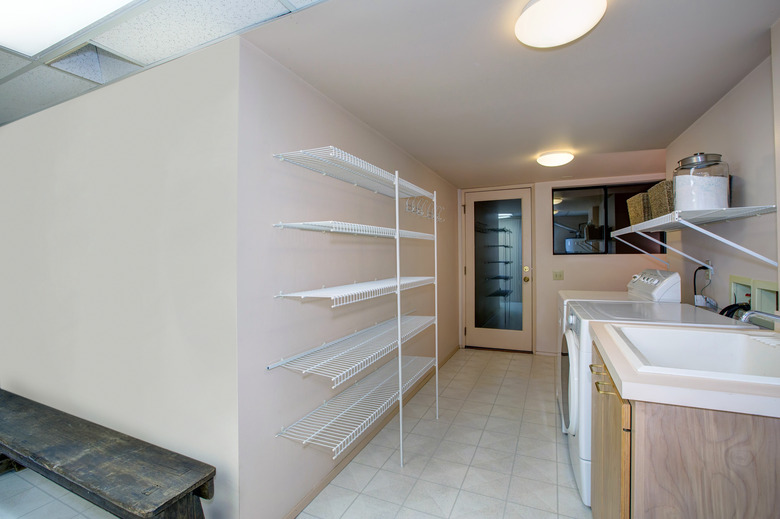How To Kill Basement Mold With Vinegar
We may receive a commission on purchases made from links.
Basements have a reputation for being musty but don't ignore the smell assuming it's normal for the below-ground space. Musty smells can be a sign of mold growth in your basement. Cleaning up the mold and fixing the situations that promoted mold growth can help restore your basement to a cleaner, better-smelling area.
How Mold Grows
How Mold Grows
Mold spores are everywhere in the environment, both outdoors and inside your home. These spores can only grow with access to moisture. All types of materials in your home, including wood, insulation, carpet, upholstery, and ceiling tiles, can serve as food for the mold. It continues growing until it becomes visible to the naked eye.
Why Basements Are Susceptible
Why Basements Are Susceptible
Basements are often ideal locations for mold growth because of excess moisture. Water can leak in through cracks in the foundation, or plumbing that runs through the basement might leak and create a moist environment. Basements are often the location of appliances, like furnaces and water heaters, that might generate moisture. Your basement might also lack adequate ventilation to help keep moisture levels under control. That extra moisture in your basement provides the conditions necessary for mold spores to grow.
Preparing for Mold Removal
Preparing for Mold Removal
You can remove mold from your basement yourself, especially if it's a relatively small problem when you discover it. Extensive mold growth throughout the basement might require professional mold remediation. Inspect all areas of your basement to determine the extent. Move boxes and furniture out of the space to get a better idea of the extent of the issues.
Some items might need to be thrown away or replaced if they're severely damaged by mold. If the mold grew through drywall in a finished basement, you might need to replace those sections, for example. If carpeting or ceiling tiles are full of mold, they might need to be removed and replaced.
Before cleaning up the mold, open the windows to ventilate the basement. Put on long sleeves and pants to cover as much skin as possible. A respirator mask and goggles are also helpful to protect yourself while removing the mold.
Using Vinegar to Kill Mold
Using Vinegar to Kill Mold
Regular distilled vinegar can kill and clean up mold in your basement. It works particularly well on hard, nonporous surfaces, but it can be used on almost any surface, including wood and drywall. Keep in mind that vinegar might damage some surfaces, such as wooden floors with finishes. Never use vinegar and bleach on the same area, even if you wipe them between applications. The interaction between the two can create chlorine gas, which is toxic and dangerous.
To use vinegar to kill the mold, spray undiluted vinegar on the surface. Let it sit for an hour. Use a scrub brush to clean the area. Wipe away the remnants and spray it again with vinegar to kill any lingering mold.
Preventing Future Basement Mold
Preventing Future Basement Mold
You'll likely see a return of the mold if you don't fix the moisture issues in your basement. The steps you need to take depend largely on the moisture source in your basement. Corrections you might need to perform include:
- Repairing leaks: Fix any plumbing leaks to prevent moisture buildup.
- Fixing foundation issues: Repair cracks or leaks in your foundation to keep your basement dry.
- Running a dehumidifier: If your home has high humidity overall, using a dehumidifier in the basement can help.
- Dealing with clutter: Elevate items off the floor and cut down on clutter. Lots of items piled on the floor or against the walls can trap moisture and increase mold growth.
- Increasing ventilation: Add exhaust fans or other sources of ventilation in the basement to help.
